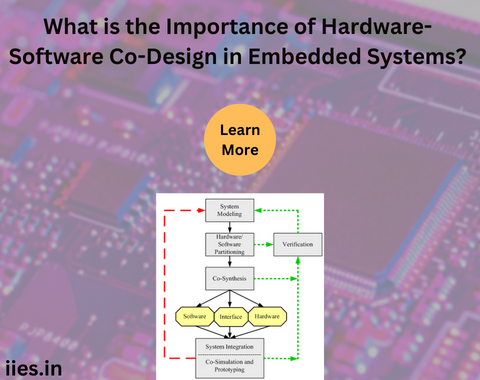
In the dynamic landscape of technology, embedded systems play a pivotal role in powering a plethora of devices that have become integral to our daily lives.
These systems, ranging from smart home devices to automotive control systems, require a delicate balance between hardware and software components to deliver optimal performance.
The concept of hardware-software co-design has emerged as a powerful paradigm, facilitating the seamless integration of both domains to create efficient, agile, and high-performance embedded systems.
Embedded systems are specialized computing systems designed to perform dedicated functions within a larger framework. Unlike general-purpose computers, embedded systems are tailored for specific applications, often characterized by real-time constraints, resource limitations, and power efficiency requirements. This unique set of challenges necessitates a holistic approach to system design, where both hardware and software are intricately interwoven to achieve optimal results.
Hardware-Software Co-design Defined:
Hardware-software co-design is a design methodology that emphasizes the simultaneous development of both hardware and software components of an embedded system. Rather than treating hardware and software as separate entities, co-design seeks to exploit synergies between them to enhance overall system performance, reduce development time, and optimize resource utilization.
In traditional design approaches, hardware and software are developed independently, leading to potential inefficiencies and suboptimal utilization of resources. Co-design, on the other hand, promotes collaboration between hardware and software engineers from the initial stages of the design process, fostering a more unified and efficient system architecture.
1. Performance Optimization:
– By considering hardware and software requirements concurrently, co-design allows for the optimization of algorithms, data structures, and system architectures, resulting in improved overall performance.
– Tasks that are computationally intensive can be offloaded to specialized hardware accelerators, freeing up the main processor for other critical tasks.
2. Reduced Development Time:
– Co-design facilitates parallel development of hardware and software, reducing iteration cycles and speeding up the overall development process.
– Simultaneous development allows for early detection of potential issues, enabling quicker resolution and preventing bottlenecks in the later stages of the project.
3. Resource Efficiency:
– With a comprehensive understanding of both hardware and software requirements, co-design enables optimal resource allocation, reducing unnecessary overhead and improving energy efficiency.
– Hardware components can be designed to match the specific needs of the software, avoiding over-provisioning and conserving valuable resources.
4. Adaptability and Flexibility:
– Co-design supports a more agile development process, allowing for quick adjustments in response to changing requirements.
– Adaptive hardware architectures can be dynamically reconfigured to accommodate varying workloads, enhancing the system’s flexibility and versatility.
5. Real-time Responsiveness:
– Embedded systems often operate in real-time environments where timely responses are crucial. Co-design ensures that both hardware and software are fine-tuned to meet stringent real-time requirements, minimizing latency and improving system responsiveness.
While hardware-software co-design offers numerous advantages, it comes with its own set of challenges. Coordination between hardware and software teams, synchronization of development cycles, and ensuring compatibility are critical aspects that need careful attention. Additionally, maintaining a balance between performance optimization and development complexity is essential to avoid overengineering and increased project costs.
Case Studies:
1. Mobile Processors:
– Modern mobile processors exemplify successful hardware-software co-design. The integration of specialized hardware accelerators for tasks like image processing and artificial intelligence, coupled with optimized software algorithms, results in efficient and responsive mobile devices.
2. Automotive Control Systems:
– In the automotive industry, co-design is crucial for developing advanced driver assistance systems (ADAS) and autonomous driving functionalities. The collaboration between hardware and software engineers ensures that the embedded systems can process sensor data in real-time, enabling quick and accurate decision-making.
Future Trends and Innovations:
1. Machine Learning Integration:
– As machine learning becomes increasingly prevalent in embedded systems, co-design will play a vital role in optimizing both the hardware accelerators and software algorithms required for efficient implementation of neural networks.
2. Security Integration:
– The rising concern over cybersecurity in embedded systems necessitates a holistic approach to co-design, addressing vulnerabilities in both hardware and software layers to create robust and secure systems.
3. Quantum Computing and Co-design:
– The advent of quantum computing introduces new challenges and opportunities for hardware-software co-design. As quantum processors become more practical, co-design methodologies will evolve to harness the unique capabilities of quantum computing in tandem with traditional computing systems.
In conclusion, the building blocks of embedded systems form a sophisticated tapestry of hardware and software components working in harmony. From the microcontroller’s processing power to the communication interfaces facilitating connectivity, each element plays a crucial role in the seamless operation of embedded systems. As technology continues to advance, the evolution of these building blocks will undoubtedly shape the future of embedded systems, bringing forth even more innovative and capable devices.
Indian Institute of Embedded Systems – IIES